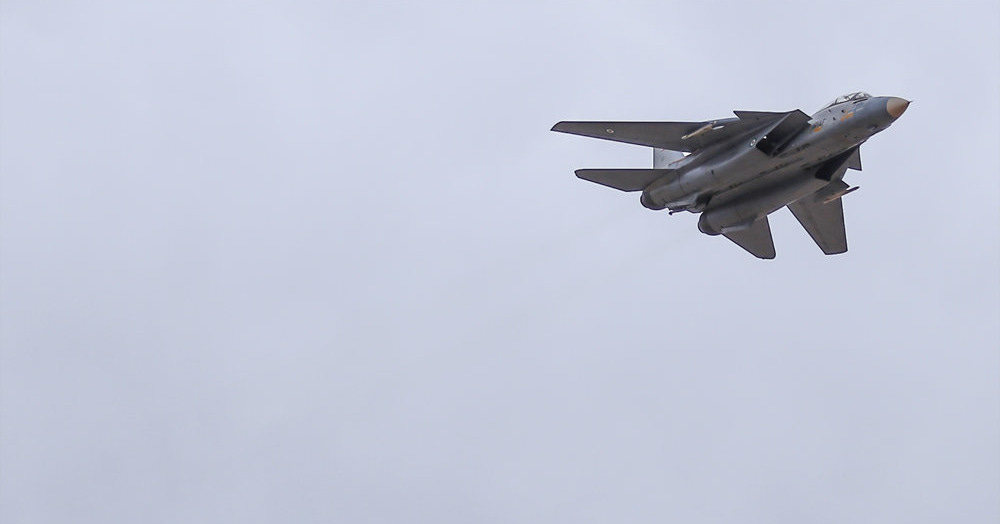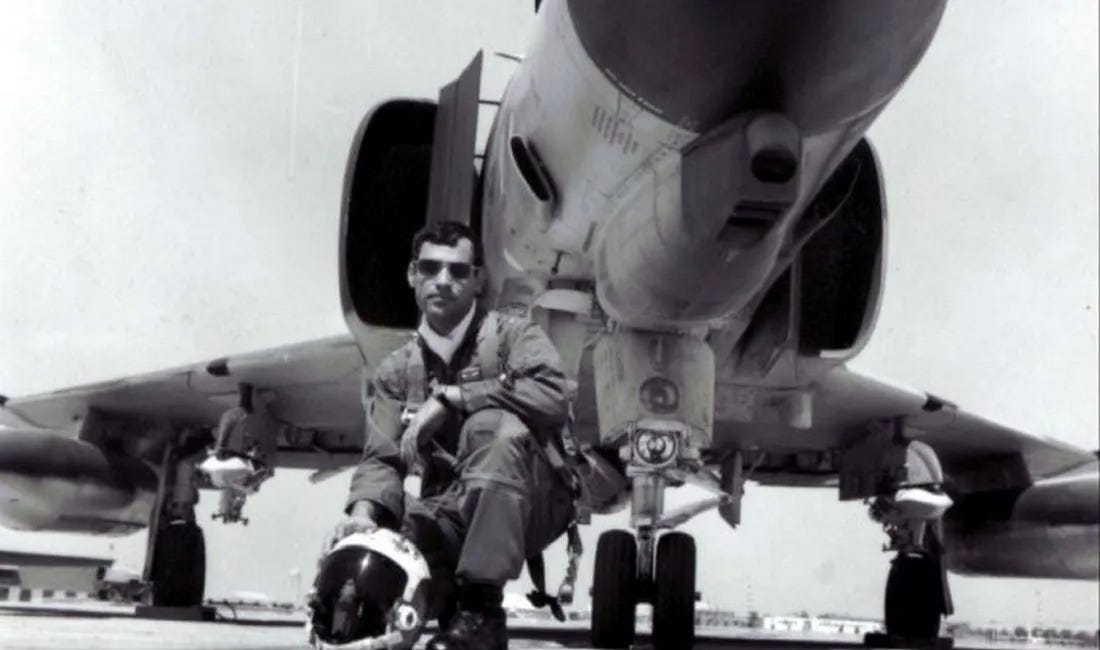The Saudi F-14
Saudi Arabia almost got America's iconic Tomcat fighter
by PAUL IDDON
In the 1970s, several U.S. allies in the Middle East scrambled to acquire the new “Teen Series” fighter jets then entering service in the United States. Iran, Israel and Saudi Arabia all assessed the Grumman F-14 Tomcat and McDonnell Douglas—now Boeing—F-15.
Saudi Arabia and Israel ultimately chose the F-15, and Iran became the only foreign operator of the F-14.
It could’ve gone another way—with the swing-wing F-14s going to the Saudis, instead.
In early 1979, Saudi Arabia suggested it could purchase 80 F-14s—the same 80 airframes Iran’s U.S.-allied Shah, Mohammad Reza Pahlavi, had just inked a deal for.
Revolution rocked Iran in January 1979. Pahlavi fled the country on Jan. 16, two weeks before the Ayatollah Ruhollah Khomeini triumphantly returned from exile and began imposing a top-down theocratic Islamist regime that would ultimately poison U.S.-Iran relations for decades to come.
During that chaotic transitional period throughout 1979, the administration of U.S. Pres. Jimmy Carter worried about America’s myriad strategic interests in Iran, including the safety of American military advisors and the 79 F-14s Grumman had delivered since January 1976. The 80th F-14 was never delivered.
In early 1979, a Saudi official suggested to the U.S. Defense Department that Riyadh purchase Tehran’s Tomcats. Doing so, the official reasoned, could solve two problems: American concerns that the Soviet Union could access and closely examine Iranian F-14s and Saudi Arabia’s requirement for advanced fighter jets.
The Pentagon rejected the proposal.
The Carter administration had already agreed to sell the Saudis 60 F-15s, despite significant opposition from Israel and its supporters in Washington. The Defense Department’s rejection of a Saudi Tomcat purchase was hardly surprising, considering it had previously advised Riyadh against purchasing any fourth-generation fighters, arguing the Saudis couldn’t handle such sophisticated aircraft.
As with their Iranian and Israeli counterparts, Saudi pilots flew demonstration flights of both the F-14 and the F-15 in 1976. Despite the Defense Department’s advice, Riyadh wasn’t content with having 110 third-generation Northrop F-5s as its main fighters.
The kingdom signaled it would order Dassault Mirage F.1s from France if the U.S. refused or delayed an F-15 sale. Riyadh ultimately got its F-15s, which went on to shoot down two Iranian McDonnell Douglas F-4s on June 5, 1984 and two Iraqi Mirage F.1s on Jan. 24, 1991.
With its powerful AWG-9 radar and long-range AIM-54 Phoenix missiles, the twin-engine, supersonic F-14 was an advanced fighter in its day, especially when it came to beyond-visual-range air-to-air combat. The Phoenix could destroy airborne targets from an impressive 100 miles away.
Therefore, it was hardly surprising that the White House had concerns about the fate of Iran’s F-14s.
Interestingly, the Saudi purchase suggestion coincided with another suggestion for securing Tehran’s Tomcats. Egyptian Pres. Anwar Sadat offered to have his country host F-14s or any other advanced weapons systems flown or transported out of Iran.
The Carter administration declined that request on the grounds that relocating such advanced aircraft to Egyptian soil could alarm neighboring Israel, which had fought a war with Egypt as recently as 1973. Incidentally, while Egypt didn’t offer to buy Iran’s F-14s like Saudi Arabia did, Egypt also sought F-15s during this period.
For decades, Washington ultimately declined any sale of F-15s to Cairo, despite selling the jet other allies in the region.
Stealing the Tomcats
While the Pentagon hinted at contingency plans for securing the Iranian F-14s, administration officials acknowledged as early as January 1979 that the U.S. had few options if Tehran declined to voluntarily part with its Tomcats.
“If you mess with the planes too soon, you probably would alienate the new government,” an administration source told Newsday that month. “If you destroy or stole what is rightfully theirs, you probably would make them permanently anti-West.”
While Washington rejected the Saudi and Egyptian proposals, the Carter administration briefly negotiated with Khomeini’s regime over buying back the fighters in the months leading up to the fateful U.S. embassy hostage crisis, which began on Nov. 4, 1979.
In March, Iran offered to sell back its entire F-14 fleet along with the Phoenix missiles. It had planned on reducing the size and cost of the large military arsenal the Shah had built by selling off the expensive, complex and maintenance-heavy Tomcats while keeping the less sophisticated F-4s and F-5s the Shah had also acquired.
U.S. officials refused to pay the new Iranian authorities the same price the Shah had paid for the F-14s. It suggested that Tehran allow American inspectors evaluate the jets to determine a reasonable price. The administration also suggested Tehran could trade the Tomcats for the spare parts it would need for its F-4s and civilian airliners.
In August, an Iranian newspaper quoted Foreign Minister Ibrahim Yazdi saying Iran could resell the F-14s to the U.S. “or any other country willing to buy them from us.” Washington interpreted his comment as a thinly veiled threat to sell them to Moscow.
Of course, that never happened. Foreign operators of U.S. military hardware generally require authorization from Washington before reselling to another country, as the U.S. reminded Venezuela in 2006 after Caracas hinted it might sell its 21 F-16s to Iran.
With the onset of the hostage crisis in November, all bets were off. Mainstream media in the U.S. suggested stealing or destroying Iran’s F-14s.
“Nobody in his right mind would try that,” one unnamed F-14 expert told The Washington Post that month when asked whether American pilots could fly the Tomcats out of Iran.
Ultimately, Iran’s F-14s remained on Iranian soil—and played a pivotal role defending the country throughout the ensuing Iran-Iraq War. Today, they are the only operational F-14s left in the world. Israel’s June 2025 air campaign against Iran destroyed some F-14s on the ground at Tehran’s Mehrabad Airport.
Others are likely still intact and flyable.
Read more:




